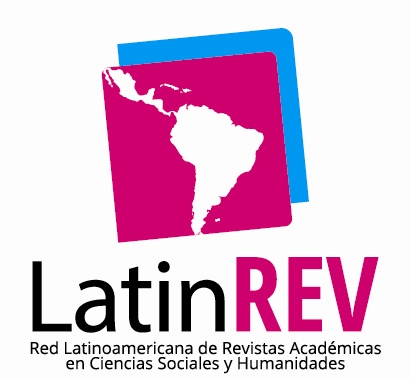Recuerdo literario en el papiro Westcar. Algunas consideraciones sobre el faraón como hijo de Ra
Keywords:
Son of Ra, Westcar Papyrus, MemoryAbstract
The Pharaoh as a “son of Ra” was not in Ancient Egypt only an expression which some pharaohs came within a framework of representation of its origin, but it came to be instituted in the Old Kingdom as the fifth Royal title of Pharaoh, sA ra. The purpose of this article is to analyze the gradual development of the relationship of the king as son of the god Ra in the context of an increasingly solarized royalty. We hope to understand the formation of literary memory mythically expressed in the last two Westcar Papyrus stories as part of a context of transition that settles Pharaoh as the Son of God Ra.
Downloads
References
Allen, J.P., The Ancient Egyptian Pyramid Texts, Atlanta, Society of Biblical Literature, 2005.
Araújo, E., Escrito para a Eternidade, Brasilia, Impresa Oficial do Estado, 2000.
Assmann, J., La memoria culturale. Scrittura, ricordo e identità politica nelle grandi civilità antiche, Torino, Biblioteca Einaudi, 1997.
Assmann, J., “Cultural and Literary Texts”, en G. Moers (ed.), Definitely: Egyptian literature, Göttingen, Lingua Aegyptia, 1999, 1-15.
Assmann, J., Egipto: Historia de un sentido, Madrid, Abada Editores, 2005 [1996].
Assmann, J. Religión y memoria cultural. Diez estudios, Buenos Aires, Lilmod- Libros de la Araucaria, 2008.
Aufrère, S., “Contribution à l’étude de la morphologie du protocole ‘classique’”, BIFAO 82, 1982, pp. 19-73.
Baines, J., “Contexts fate: literature and practical religion”, en Eyre, C. y otros, The Unbroken Reed. Studies in the Culture and Heritage of Ancient Egypt in Honour of A.F. Shore. London, Egypt Exploration Society, 1994.
Baines, J.,“Kingship, definition of culture and legitimation”, en O’ Connor, D. y Silverman, D.P. (Eds.), Ancient Egyptian Kingship, Leiden, E.J. Brill, 1995, pp. 3-47.
Blackman, A.M., Middle Egyptian Stories, Bruxelles, Bibliotheca Aegyptiaca, 1932.
Borchardt, L., Catalogue général des antiquités égyptiennes du Musée du Caire: Statuen und Statuetten von Königen und Privatleuten, Berlín, Reichsdruckerei, 1911, Vol. I.
Breasted, J. H., Ancient records of Egypt: historical documents from the earliest times to the Persian conquest, Nueva York, Russell and Russell, 1906.
Brunner, H., Die Geburt des Gottkönigs. Studien zur überlieferung eines altägyptischen mythos, Wiesbaden, Otto Harrassowitz, 1964.
Campbell, C., The Miraculous Birth of King Amon-Hotep III. And Other Egyptian Studies, Edimburgo, Oliver and Boyd, 1912.
Cervelló Autori, J., Egipto y África. Origen de la Civilización y la Monarquía faraónica en su contexto africano, Barcelona, Ausa, 1996.
Daressy, M.G., Notice explicative des ruines du Temple de Louxor, El Cairo, Imprimerie Nationale, 1898.
Daressy, M. G., “La Pierre de Palerme et la chronologie de l´Ancien Empire”, BIFAO 12, 1916, pp. 161-214.
Davies, G.N., The Tomb of Rekh-mi-Re at Thebes, Nueva York, Arno Press, 1943.
Dodson, A y Hilton D., Las familias reales del Antiguo Egipto, Madrid, Oberon, 2005.
Dobrev, V., “Considérations sur les titulatures des rois de la IVe dynastie égyptienne [avec 16 planches]”, BIFAO 93, 1993, pp. 179-204.
Eliade, M., Mito y realidad, Barcelona, Labor, 1992 (1963).
Enmarch, R., The Dialogue of Ipuwer and the Lord of All, Oxford, Griffith Institute Publications, 2005.
Enmarch, R, A World of Khakheperreseneb on and Analysis of the Dialogue of Ipuwer and the Lord of All, Oxford, Griffith Institute Publications, 2008.
Erman, A., Die Sprache des Papyrus Westcar. Eine Vorarbeit zur Grammatik der Älteren Aegyptischen Sprache, Göttiengen, Dieterich’sche Verlagsbuchandlung, 1889.
Erman, A., Die Märchen des Papyrus Westcar, Berlin, W. Spemann, 1890.
Erman, A., The literature of the Ancient Egyptians: poems, narratives, and manuals of instruction, from the third and second millennia B.C., London, Methuen, 1927.
Faulkner, R., “The Admonitions of an Ancient Egyptian Sage”, en W.K. Simpson (ed.), The Literature of Ancient Egypt. An Anthology of Stories, Instructions, and Poetry, London, Yale University Press, 1973, pp. 210-229.
Frankfort, H., Kingship and the Gods: A Study of Ancient Near Eastern Religion as the Integration of Society and Nature, Chicago, University of Chicago Press, 1998 [1948].
Fuscaldo, P., “La expresión s3 r’ en el protocolo de coronación de la dinastía IV”, RIHAO, 1966, Buenos Aires, separata.
Gaballa, G.A., Narrative in Egyptian Art, Mainz, Philipp von Zabern, 1976.
Galán, J.M., Cuatro Viajes en la Literatura del Antiguo Egipto, Madrid, Centro Superior de Investigaciones Científicas, 1998.
Galán, J.M., El Imperio egipcio. Inscripciones, ca. 1550-1300 a.C., Barcelona, Trotta, 2002.
Gardiner, A., The Admonitions of an Ancient Egyptian Sage, from a Hieratic Papyrus in Leiden (Pap. Leiden 344 Recto), Leipzig, J. C. Hinrichs, 1909.
Gardiner, A., “New Literary Works from Ancient Egypt”, JEA 1, 1914, pp. 100-106.
Gayet, A.. Le temple de Louxor, Constructions d'Aménophis III. Cour d'Aménophis, salle hypostyle, salle des Offertoires, salle du Lever et sanctuaire de Maut, París, E. Leroux, 1894.
Goedicke, H., The Protocol of Neferyt (The Prophecy of Neferti), Baltimore: Johns Hopkins University Press, 1977.
Goedicke, H., “Rudjedet’s Delivery”, VA 1, 1985, pp. 161-170.
Goedicke, H., Problems concerning Amenophis III, Baltimore, Halgo, 1992.
Grajetzki, W., The Middle Kingdom of Ancient Egypt, London: Duckworth, 2006.
Griffith, F. L. The Petrie Papyri. Hieratic Papyri from Kahun and Gurob. Text, Londres, Quatrich, 1898a.
Griffith, F. L., The Petrie Papyri. Hieratic Papyri from Kahun and Gurob. Plates, Londres, 1898b, Quatrich.
Halbwachs, M., Los marcos sociales de la memoria, Madrid, Anthropos2004(1925).
Hays, H. M., “The Historicity of Papyrus Westcar”, ZÄS, 129, 2002, pp. 20-30.
Helck, W., Die “Admonitions” Pap. Leiden I 344 recto, Wiesbaden, Harassowitz, 1995.
Hornung, E., El Uno y los Múltiples. Concepciones egipcias de la divinidad, Madrid, Trotta, 1999.
Jenni, H., “Der Papyrus Westcar”, SAK 25, 1998, pp. 113-141.
Kahl, J., “Ra is my Lord” Searching for the Rise of the Sun Gods at the Dawn of Egyptian History, Wiesbaden, Harrassowitz, 2007.
Kanawati, N., Conspiracies in the Egyptian Palace. Unis to Pepy I, Londres y Nueva York, Routledge, 2003,
Kaplony, P., Die Rollsiegel des Alten Reiches II. Katalog der Rollsiegel. A Textes/B Tafeln, Bruselas, Fondation égyptologique Reine Élisabeth, 1981.
Kemp, B., El Antiguo Egipto. Anatomía de una civilización, Barcelona, Crítica, 2004.
Kitchen, K. A., Pharaoh triumphant. The Life and Times of Ramesses II, El Cairo, The American University in Cairo Press, 1982.
Lefebvre, G., Mitos y cuentos egipcios de la época faraónica, Madrid, Akal, 2003 (1982).
Lepper, V.M., “New readings of an Old Text: Papyrus Westcar”, Proceedings of the Ninth International Congress of Egyptologist Grenoble, 2004, OLA, pp. 1125-1136.
Lepper,V.M., Untersuchungen zu pWestcar. Eine philologische und literaturwissenschaftliche (Neu-) Analyse, Wiesbaden, Harrassowitz, 2008.
Lichtheim, M., Ancient Egyptian Literature. A Book of Readings. The Old and Middle Kingdoms, Berkeley, University of California Press, 1973.
López, J., Cuentos y Fábulas del Antiguo Egipto, Barcelona, Trotta, 2005.
Lorton, D., “Review: Towards a Constitutional Approach to Ancient Egyptian Kingship”, JAOS 99, 1979, pp. 460-465.
Lull, J., La astronomía en el antiguo Egipto, Valencia, Universitat de València, 2006.
Moreno García, J.C., Egipto en el Imperio Antiguo (2650-2150 a.C.), Barcelona, Bellaterra, 2004.
Morenz, L.D., “Literature as a construction of the past in the Middle Kingdom”, en: J, Tait, (ed.), ‘Never Had the Like Occurred’. Egypt`s view of its past, London, University College London, 2003, pp. 101-117.
Müller, H. W., “Der Gute Gott Radjedef, Sohn des Rê”, ZÄS 91, 1964, pp. 129-133.
Naville, E., The Temple of Deir el Bahari, London, Egypt Exploration Fund, Londres, 1896, Vol. II.
Parra Ortíz, J.M., “El Reino Antiguo”, en Parra Ortiz, J.M. (Coord.), El antiguo Egipto. Sociedad, Economía y Política, 2009, Marcial Pons, 2009, pp. 125-180.
Parkinson, R. B., The Tale of Sinuhe and Other Ancient Egyptian Poems, 1940-1640 BC, Oxford, Oxford University Press, 1998.
Porter, B. y Moss, R., The Theban Necropolis, Oxford, Griffith Institute, 2004.
Posener, G., De la divinité du pharaon, París, Imprimerie Nationale, 1940.
Posener, G., Litterature et politique dans l´Egypte de la XIIe Dynastie, París, Honoré Champion, 1956.
Quirke, S. Who were the Pharaohs? A history of their names with a list of catouches, London, British Museum Press, 1990.
Quirke, S., Ra, el dios del Sol, Madrid, Oberon, 2003.
Quirke, S., Egyptian literature 1800 BC, Questions and Readings, London, Golden House Publications, 2004.
Ricœur, P., La lectura del tiempo pasado: memoria y olvido, Madrid, Arrecife, 1999.
Rosell, P.M, “El rey como buen pastor. La reconstrucción de la imagen del faraón en el Reino Medio”, Cahier Caribéens d’Egyptologie, 13/14, 2010, pp. 161-174.
Salem, L., “El nacimiento divino de la V dinastía: su construcción desde un recuerdo”, en Actas XI° Jornadas Interescuelas/ Departamentos de Historia, 2007.
Salem, L., “Mito y literatura egipcia. Acerca de un mito de origen en los dos últimos cuentos del Papiro Westcar”, en Actas XII Jornadas Interescuelas/Departamentos de Historia, 2009.
Salem, L. “La realeza egipcia: Dios padre- hijo rey. Algunas consideraciones míticas literarias sobre el faraón como Hijo de Ra”, Trabajos y Comunicaciones 36, 2010, pp. 271-292.
Salem, L., “Concepciones sobre el tiempo pasado y futuro en el antiguo Egipto”, 2011, Sin publicar.
Salem, L. Memoria y recuerdo en el Reino Medio egipcio. Acerca de un mito de origen en el papiro Westcar, tesis doctoral inédita, La Plata, Universidad Nacional de La Plata, 2012.
Serrano Delgado, J.M., Textos para la Historia antigua de Egipto, Madrid, Cátedra, 1993.
Shmakov, T.T., Critical analysis of J.P. Allen “The Ancient Egyptian Piramid Texts”, Preliminary results, Osmk-Tricht, A.K. Eyma, 2012.
Silverman, D.P., “Divinity and Deities in Ancient Egyptp”, en Shafer, B.E. (Ed.), Religion in Ancient Egypt. Gods, Myths, and Personal Practice, Ithaca y Londres Cornell University Press, 1991, pp. 7-87.
Simpson, W.K., The Literature of Ancient Egypt. An Anthology of Stories, Instructions, and Poetry, London: Yale University Press, 1973.
Strudwick, N.C., The Administration of Egypt in Old Kingdom: the highest titles and their holders, Londres, KPI, 1985.
Strudwick, N.C. 2005. Texts from the Pyramid Age, Atlanta, Society of Biblical Literature, 2005.
Weindler, G., Geburts- und Wochenbetts-Darstellungen auf Altägyptischen Tempelreliefs, Munich, C.H. Beck, 1915.
Wilson, J., “Egipto”, en Frankfort, H; Frankfort, H.A; Wilson, J.A.; Jacobsen, T. El pensamiento prefilosófico I. Egipto y Mesopotamia, México, Fondo de Cultura Económica, 1954, pp. 45-163.
Downloads
How to Cite
Issue
Section
License
Copyright (c) 2012 Cuadernos del Sur Historia

This work is licensed under a Creative Commons Attribution-NonCommercial-ShareAlike 4.0 International License.
Aquellos autores/as que tengan publicaciones con esta revista, aceptan los términos siguientes:
- Los autores/as conservarán sus derechos de autor y garantizarán a la revista el derecho de primera publicación de su obra, el cuál estará simultáneamente sujeto a la licencia Atribución-No Comercial 4.0 Internacional CC BY-NC 4.0.
- Los autores/as podrán adoptar otros acuerdos de licencia no exclusiva de distribución de la versión de la obra publicada (p. ej.: depositarla en un archivo telemático institucional o publicarla en un volumen monográfico) siempre que se indique la publicación inicial en esta revista.
- Se permite y recomienda a los autores/as difundir su obra a través de Internet (p. ej.: en archivos telemáticos institucionales o en su página web) una vez publicado su trabajo, lo cual puede producir intercambios interesantes y aumentar las citas de la obra publicada. (Véase El efecto del acceso abierto).










